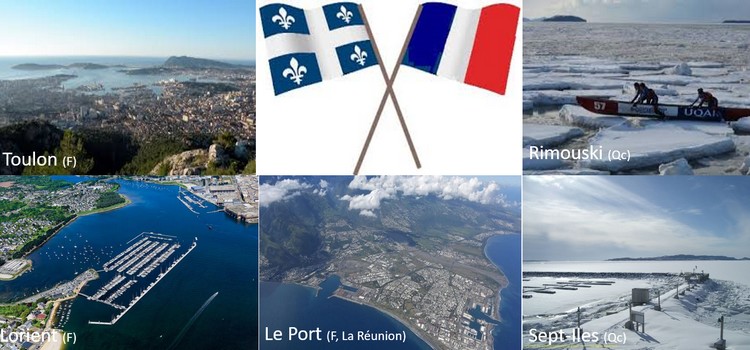Peintures Antifouling pour l’Industrie de la Navigation dans une perspective de Transition Socioécologique
Acronym :
PAINTS
Funding:
Website:
Short Overview:
In a context of a global increase of the anthropogenic pressure and impacts on the marine environment, innovative products reducing the ecological footprint of shipping which could be accepted and endorsed by local population should be developed. The general objective of this cross-sectoral, pluri- and interdisciplinary project, which involve both researcher from natural and social sciences, is to establish a transition to the use of effective ”green” antifouling coatings, ie without biocides. Such a transformation could characterise a socio-ecological transition to the “eco-navigation”. This project is divided in two parts: (1) to develop new antifouling coatings without biocides, (2) to test their potential in varied environmental and societal contexts (France-Quebec) and to identify, in an integrated manner, the socio-ecological issues associated to the use of AF coatings with and without biocide.
Innovative coatings will be developed by both academic laboratories (MAPIEM-UTLN, LBCM-UBS, UQAR) and private societies (Nautix, Mirapakon) from France and Québec. The main concept will be to add new amphiphilic copolymers to hydrophobic matrixes. An exhaustive physico-chemical characterisation of these coatings, but also a study of the conditioning film will be achieved. The efficacy of ten coatings will be assessed through long term field immersions in five contrasted locations: two temperate ecosystems with dissimilar trophic states (Bay of Lorient, Atlantic Ocean and Toulon, Mediterranean Sea, France), one tropical (La Reunion Island, Indian ocean, France), a continental cold and wet (Rimouski, Qc, Canada) and a sub-polar continental ecosystem (Sept-Îles, Qc, Canada). We also intend to study the risk of invasive species introduction through the international navigation using an original and innovative experiment of transplantation between four of our immersion sites (with mesocosms). This challenging experiment will simulate the introduction of new species through biofilms and biofouling on ship hull.
Involved MAPIEM permanent members:
- Jean-François BRIAND
- Christine BRESSY
- Gérald CULIOLI
- Marlène NOBLET (LEJARS)
- Raphaëlle BARRY-MARTINET
Partners:
- LBCM (UBS)
- CITEB / c/o CYROI, Sainte Clotilde (Ile de la Réunion)
- UQAR
- UQAR-ISMER
- Nautix
- OFB
- HEC Montreal
- Mirapakon


